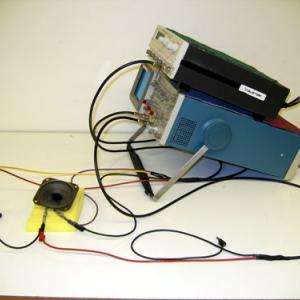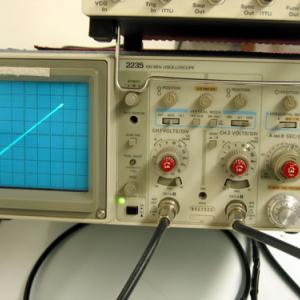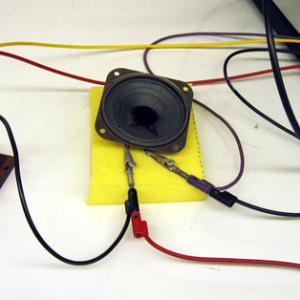College of Liberal Arts & Sciences
3E20.15 - Loudspeaker Resonance
Hook the wave generator, 50 ohm resistor, and 4 inch speaker in series. Set the oscilloscope on the X-Y plot. Measure across the resistor with channel 1 and across the speaker with channel 2.
NOTE: Only one of the ground wires on the oscilloscope leads needs to be connected.
As you sweep the frequencies, you will see the plot on the oscilloscope increase to a maximum when you reach the resonant frequency of the speaker. You will also be able to hear this by listening to the amplitude of the speaker change as you sweep the frequencies.
- B. T. G. Tan, "Fundamental Resonant Frequency of a Loudspeaker", AJP, Vol. 50, # 4, p. 348, April, 1982.
Disclaimer: These demonstrations are provided only for illustrative use by persons affiliated with The University of Iowa and only under the direction of a trained instructor or physicist. The University of Iowa is not responsible for demonstrations performed by those using their own equipment or who choose to use this reference material for their own purpose. The demonstrations included here are within the public domain and can be found in materials contained in libraries, bookstores, and through electronic sources. Performing all or any portion of any of these demonstrations, with or without revisions not depicted here entails inherent risks. These risks include, without limitation, bodily injury (and possibly death), including risks to health that may be temporary or permanent and that may exacerbate a pre-existing medical condition; and property loss or damage. Anyone performing any part of these demonstrations, even with revisions, knowingly and voluntarily assumes all risks associated with them.


